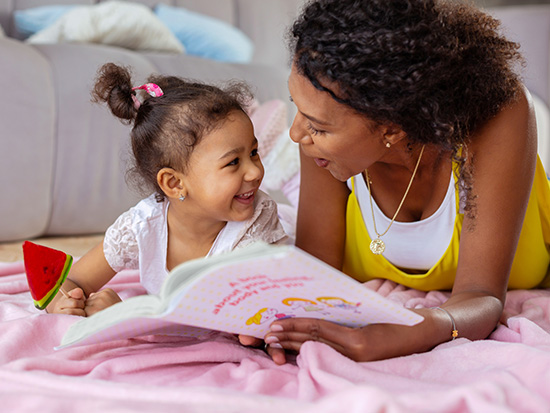Media Contact: Brianna Hoge
 Caroline Richter, Ph.D., assistant professor in UAB's Department of Psychology said that learning disabilities are common, and there are many ways for parents to identify warning signs at home and provide support. Photography: Lexi CoonAs students move through the fall semester, it is crucial to recognize that, for some, the classroom presents unique challenges. According to the National Center for Educational Statistics, nearly 15 percent of public school students received services under the Individuals with Disabilities Education Act during the 2022-2023 school year.
Caroline Richter, Ph.D., assistant professor in UAB's Department of Psychology said that learning disabilities are common, and there are many ways for parents to identify warning signs at home and provide support. Photography: Lexi CoonAs students move through the fall semester, it is crucial to recognize that, for some, the classroom presents unique challenges. According to the National Center for Educational Statistics, nearly 15 percent of public school students received services under the Individuals with Disabilities Education Act during the 2022-2023 school year.
Caroline Richter, Ph.D., assistant professor in the University of Alabama at Birmingham’s Department of Psychology, says learning disabilities are common, and there are many ways for parents to identify warning signs at home and provide support.
Although the age at which children are diagnosed with learning disabilities varies, it is often after they have started some type of formal education that they are usually detected. However, some children can exhibit signs of learning disabilities before school begins.
“The typical age for diagnosis is around second to fourth grade, but parents or teachers may notice a child struggling as early as kindergarten,” Richter said.
Diagnosis
Some signs of learning disabilities in preschool include:
- Late talking compared to other children
- Trouble producing the sounds of certain words, animals or numbers
- Slow vocabulary growth or difficulty finding the right word
- Trouble rhyming words or remembering songs
- Difficulty learning numbers, the alphabet and the days of the week
- Frequent fidgeting, restlessness and easily bored tendencies
- Getting lost in the middle of instructions or being easily distracted
“While these signs may appear, it is important to remember that no formal diagnosis can be made until after some form of formal schooling,” Richter said. “It is crucial to note that many children mix up letters or learn slowly when they are first starting out. This is not always a sure sign of a learning disability.”
Richter says teachers are often the first people to notice a child is showing symptoms of a learning disability. Teachers will often notice a child’s grades beginning to slip and schedule a meeting with the parents.
Once the child has been suspected of having a learning disability the teacher will implement what is called a multi-tiered intervention. In most school systems, children will go through a screening process each year that may be followed by further testing.
“The child will then be categorized in tiers based on the level of intervention needed — for example, tier one, tier two and tier three,” Richter said.
She goes on to explain that every child starts in tier one, meaning they need no exterior support. If a child moves to tier two, they need targeted intervention in a specific area such as reading words or writing. Tier three means the student needs a more intensive intervention.
 Reading to children at any age is a great way to support their vocabulary and listening comprehension skills.“Typically tier three students are struggling with reading comprehension or math,” Richter said.
Reading to children at any age is a great way to support their vocabulary and listening comprehension skills.“Typically tier three students are struggling with reading comprehension or math,” Richter said.
“If it is determined that further intervention is needed, the student may be evaluated for special education services.”
The Response to Intervention approach is a multi-tiered system designed to identify and support students with learning and behavioral needs. The special education tier provides necessary support to students, including services like speech and language therapy, behavior therapy, or occupational therapy.
At-home learning
Richter says there are many things parents can do at home to support their child’s education regardless of whether they have a learning disability.
“Speaking to babies in an infant-direct speech or a baby voice is a great way to start supporting your child’s speech,” Richter said. “Research has shown that this type of speech helps children learn words because it separates the word out.”
Reading to children at any age is a great way to support their vocabulary and listening comprehension skills. She explains that it is best to read to children in an interactive way.
“When reading to your child, try to make it fun and interesting by asking them questions about the pictures in the book or even having them count images on the page,” Richter said. “Not only is this a great way to practice language comprehension, but it gets the child excited about learning.”
She encourages parents to continue to read with the child even after they have begun reading on their own as this helps to keep the child engaged in learning. Richter says young children can start engaging in math activities as well.
“Getting your child to play with shapes or start counting is a great way to begin thinking about math skills,” Richter said.
She suggests helping young children get acquainted with the size and weight of different objects and comparing those. As the child gets older, the parents can begin to incorporate other types of math into their lives.
“Playing board games can be a fun way to integrate learning. Children can count the number of spaces they are supposed to move or the number they rolled on some dice,” Richter said. “I also tell parents to take their children to the grocery store and have them count how many of something you will be buying or getting them acquainted with budgeting.”
The grocery store can be a great place for learning. Teaching them about measurements while cooking or discussing the size of a product to buy helps them understand concepts they may learn in school in a real-world setting.
There are many resilience factors that go into supporting a child. Some best practices include providing encouragement, avoiding stigmatization of learning disabilities, fostering strong self-esteem, and prioritizing positive relationships with family and educators. These can significantly improve a child’s learning experience.
“One of the best ways to support your child is to focus on what they did right and encourage those behaviors,” Richter said. “For example, if your child gets three out of five questions right the parent should focus on the correct questions and ask what they can do to get better next time.”
Richter says it is important to remember that a learning disability does not limit a child’s potential for success; it simply means the child may need a bit of extra support to thrive.